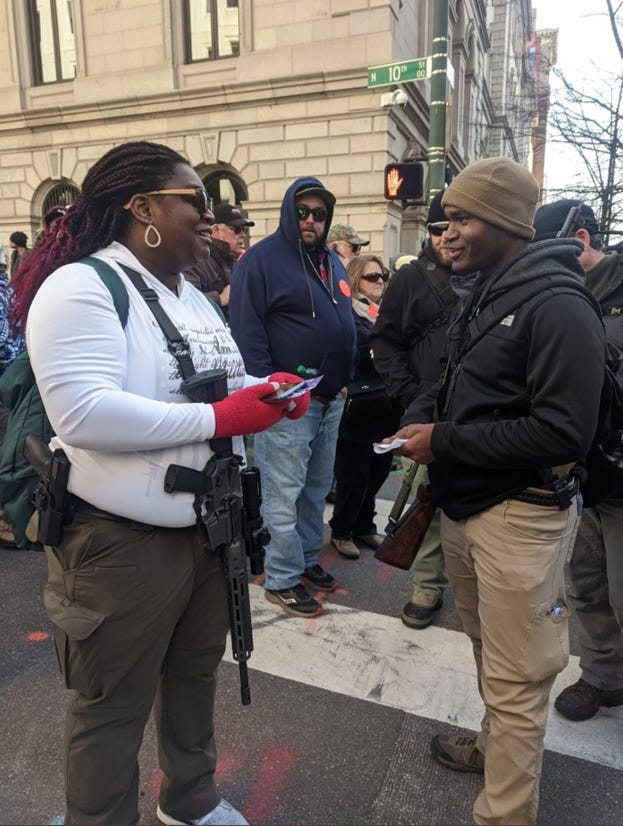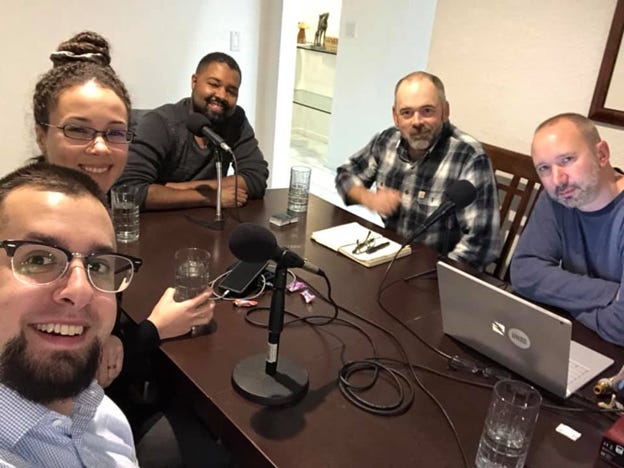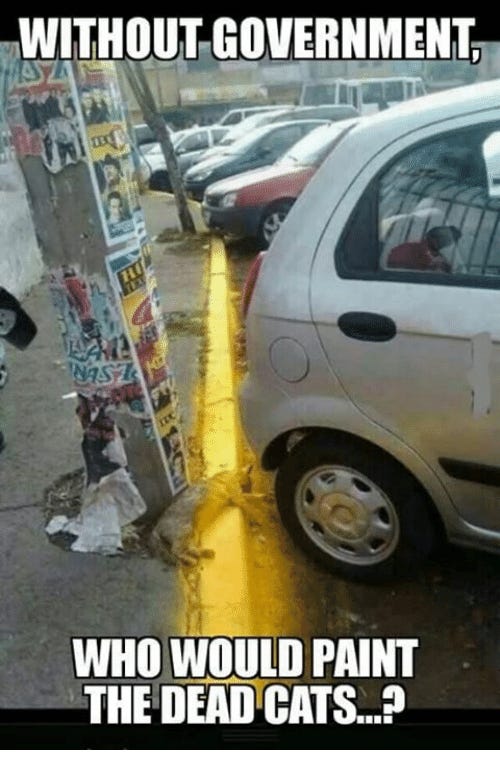This article was originally published on January 30, 2020, on Medium. Since then it seems the idea of memes as a new language has quite taken off, but the important part of this idea that’s not often discussed is how much information you can bury in a meme, and how that compression allows the overall human superorganism to push past the Singularity barrier.
In the past half-decade, the social media space has pivoted heavily away from people sharing articles, and towards people sharing memes. Memes, for our purposes in this article, shall refer not to overall memetic ideas spreading through the evolutionary intellectual space as Richard Dawkins outlined in The Selfish Gene, but rather funny photos with captions that folks post to Facebook, Reddit, or 4chan.
This shift has been pronounced, and oft maligned, but I think it makes a lot of sense mathematically if you understand what’s going on in the social media superorganism. And I have a very good example of this from the last two weeks, which we can use to compare mathematically.
Case Background
When the HWFO publication isn’t dwelling on media criticism or societal analysis or bemoaning the financial incentives that drive the culture war, we talk about guns. Quite honestly, most of our traffic is about guns. But we do so in an apolitical, numbers driven way, without calling anyone a libtard or a Trumpkin or a snowflake or a teabagger. That approach has found purchase in the online liberal gun owning community, because they have few modern outlets focusing on gun rights that aren’t trying to actively insult them.
In particular, our gun material gets a lot of traffic on a subreddit called r/liberalgunowners, and I unabashedly admit to self-promotion there.
On Martin Luther King Day in 2020, 22,000 citizens showed up in Richmond armed to the teeth and staged one of the most peaceful, clean, and orderly protests of that type and magnitude in American history. The anti-gun media, both before and after the protest, painted the entire thing as a racist, white nationalist rally. The online liberal and centrist gun owning community were starved for shareable examples to contradict that narrative, so they tweeted out pictures of this lady:
…and these guys:
…and such.
SHOT Show began the following day in Las Vegas, an industry only gun convention in Las Vegas put on by the NSSF. I attended with the Open Source Defense (OSD) group, to make media connections.
On Thursday, OSD recorded a podcast with Guns Guide to Liberals and Douglas Jefferson, the vice president of the National African American Gun Association. I stuck Jon’s selfie up on reddit. It got 634 upvotes.
I also did a far more exhaustive summary of my experiences at SHOT, put it into an article, and stuck that article up on reddit. I even included the same photo. It got 145 upvotes.
Why did a picture get 634 upvotes, and a much more detailed informational piece about not only that podcast but the entire week only get 145? I think the answer partly goes back to the concept of memes as data compression.
Case Study
The point of media is to convey an idea. Facts are only necessary to buttress the idea, and vacant facts lacking a raison de tere are of no value. The net, the media, and such, are a sea of ideas, so the idea density within a media piece is the important factor when we look at data compression. Let’s look at the 146 upvote article link first. It points to here:
Handwaving Freakoutery at SHOT Show 2020 - The Open Source Defense group goes to Vegas, to meet an interesting and diverse cast of characters.
When I skim this article, I count somewhere around twenty-four general ideas, some relatively brief, some elaborated fairly explicitly. Here’s an example of one idea from the article:
The gun community commonly holds that gun ownership is to protect yourself or your family when an armed authority is unable to respond in a timely manner to a violent situation, or is unwilling to do so, or both. The anti-gun community commonly dismisses this as a minor problem, or sheer paranoia. But the historical experiences of the black community are a direct counterexample to this dismissal.
We might summarize this idea by saying, “the history of black people in the United States supports the case for private gun ownership.”
Here’s another, simpler idea:
The following day, we met one of [F.A.B Defense’s] Instagram models that Chuck also helped get back online, after a Turkish hacker had stolen her account. She was very friendly.
We might summarize this idea by saying “gun bunnies are alluring.” You be the judge.
(You can tell they haven’t been firing the PCC she’s carrying recently because her fingers are on the suppressor. They get hot.)
Twenty-four ideas conveyed in an approximate ten minute read. This is a 2.4 idea per minute compression rate.
Now let’s look at the photo.
Out of context, this photo conveys no ideas. In the context explained above, it only conveys two:
Liberals like guns too.
Black people like guns too.
That’s it. But those ideas are conveyed in around one second. That’s a compression rate of 120 ideas per minute. The photo in context conveys ideas at a rate fifty times faster than the article. We have this understanding that “a picture is worth a thousand words,” and by my guess that estimate isn’t too far off, but the important thing about pictures is they convey those words quickly.
Application to the Attention Economy
The “attention economy” is a concept that’s been bandied about by future thinking media organizations quite a bit, and has been touched on several times here.
Can Fortnite Rescue Humanity from the Attention Economy War?
If you don’t feel like reading back, we might summarize this idea by saying the following. People’s attention spans are a fixed quantity, and in order for media entities to extract the most of that fixed resource, in a Tragedy of the Commons scenario, they pivot to several different strategies. Outrage porn headlines put them in front of the line when extracting clicks from the smartphone addicted public, but shortened articles mean they can convey their (perhaps more poorly supported) idea in a faster time, necessitating less of the shared resource to convey the idea. Hit pieces capitalize on our data compression paradigm.
Internet memes capitalize on it further. This one is my favorite example.
This is admittedly a very libertarian meme, and libertarian thought triggers some people. My point here is not to say the meme is correct or right in an objective sense, but rather purely to critique the meme from the standpoint of idea compression rate.
First off, it’s got cats. Every good internet meme has a cat. Idea 1: Cats are cute and cool and everybody who isn’t a monster likes cats. Idea 2: Government is wasteful. They spent all this money to paint a stripe on the curb and painted a cat. Idea 3: Government is heartless. What monster would paint a cat? Idea 4: It invokes the well-known “But muh roads!” rebuttal to libertarian thought, wherein libertarians say we don’t need government, and anti-libertarians say “but without government, there wouldn’t be any roads,” which is a deep and long argument that plays out thousands of times daily in our culture war, chocked full of hundreds more ideas. The opening two words “without government” are not merely an idea, they’re a mental hyperlink to a bundle of hundreds or more other ideas.
This meme takes three seconds to process. Conservatively that’s an 80 ideas per minute compression rate, presuming the embedded memetic hyperlink only counts as one idea, when in fact it should count as many more. And it contains embedded instructions on when and how to share it.
(if) “but without government ___”
(then) “post pic # 382 from phone”
Application to the Superorganism
We have spoken extensively here about modeling the modern social media engine as a legitimate, verifiable brain, which works in the same manner as an artificial neural network.
We might summarize this idea as follows. People behave on social media in the exact same way as neurons in a brain. Your feed is a series of impulses you gather from your dendrites (connections), you evaluate which of those signals to amplify, and then you like or share a signal, sending it down your axon (repost) to other neurons. This evaluation you make, about whether to share something or not, is performed based on an internal function rooted partially in your biology, but probably rooted largely in your indoctrinations.
The main difference between social media and a human brain is that the neurons are sending 1s and 0s, fire or don’t fire, whereas the information being conveyed in social media are ideas, which are comprised of a tremendous amount of additional information. If each word is a Wittgensteinian composition of a hundred signals, and an article or picture is worth a thousand words, then each share of an idea is maybe a hundred thousand neurons firing in the social media metabrain. That’s a garbage number, that’s probably far too low, but pretend that’s right. If we look at internet usage per minute statistics, we’ve got somewhere around 270 million ideas spreading per minute through the internet. That’s 450 billion signals per second.
An average neuron in the human brain fires between 0.1 and 2 times per second, and the brain has 86 billion neurons. Based on our very bad garbage estimation translating ideas into bits, this social media internet thing is already “thinking” five times faster than a human brain, with each of us playing a role as a neuron. And as our general internet language pivots to memes, this rate will increase as much as fifty-fold. Critiquing the “Wittgenstein Garbage” part of the estimation would necessarily lead us to revise this number upward.
And the metabrain neurons (people) who pivot more towards meme sharing will be able to fire more, thereby producing a disproportionate influence on the thought patterns of the overall metabrain.
I guess what we’re saying here is to quit college and go be a memelord.
Also, if someone can distil this article into memeform, that’d be great.









Shorthand personal experience (rant) with the attention economy: How-to videos. Google search for instructions to do a very simple thing and most results are YouTube how-to videos, wherein I will have to watch some yahoo yammer at me for several minutes about how to do something that literally could be accomplished in ten seconds on a list with fewer words than this comment. To bring it around, I simply do not want to spend my attention on video unless the medium actually adds something that text would be unable to convey.
This is also why I quit going to find out what Scott Adams thinks. He ditched the written format in favor of video. Seems to me that video is more expensive and time consuming to produce, edit, and maintain, but there must be some reason it's preferred o the content creator side.
Please keep your HWFO in print.
Long ago it writing proposals, I learned that a graphic was better than words. Produced more winning proposals. But creating a good graphic required a LOT of thought, then a decent artist to take a bad sketch into reality. That demands skills few of us have.
Industry outlook for meme creators is good. It's not easy. How can we get there?
I've long thought that those music videos that flashed scene after scene were rewiring young brains. Am I wrong?